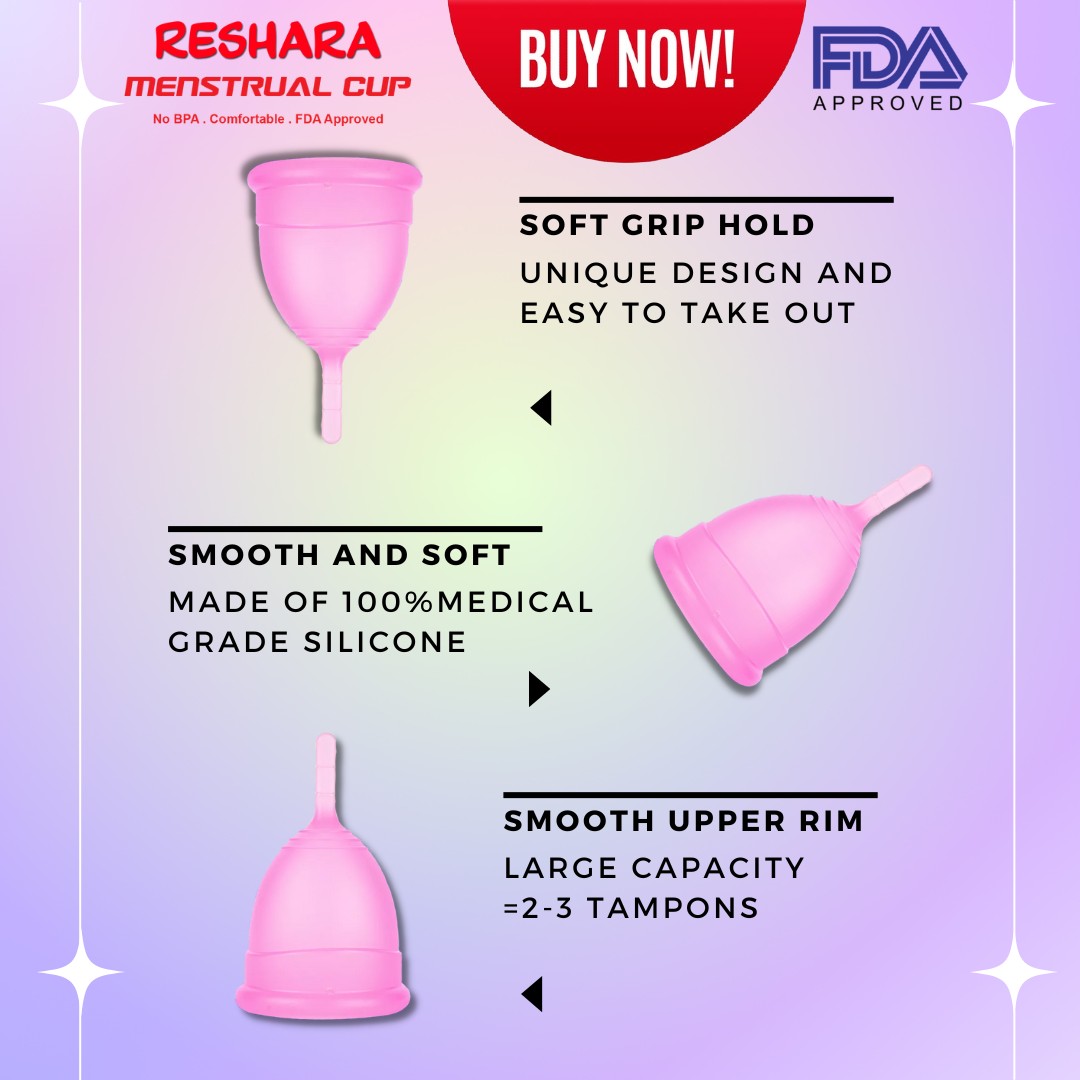In a world where environmental consciousness and women’s empowerment are at the forefront of social and cultural discussions, the menstrual cup has emerged as a revolutionary and empowering choice for people who menstruate. This innovative and sustainable alternative to traditional menstrual products has gained popularity in recent years, transforming the way we manage our periods. In this comprehensive guide, we will explore the menstrual cup, its benefits, how to use it, its environmental impact, and its role in promoting menstrual health and well-being.
History of the Menstrual Cup
The concept of the menstrual cup dates back to the early 1930s when American actress Leona Chalmers patented the first design. However, due to societal taboos and the widespread availability of disposable pads and tampons, the menstrual cup remained largely overlooked for decades. It wasn’t until the early 21st century that this innovative product began to gain traction, fueled by growing environmental concerns and a desire for sustainable menstrual solutions.
What is a Menstrual Cup?
A menstrual cup is a small, bell-shaped device made from medical-grade silicone, rubber, latex, or elastomer that is designed to be inserted into the vagina to collect menstrual fluid. Unlike tampons and pads, which absorb menstrual flow, menstrual cups provide a more sustainable and eco-friendly way to manage periods by collecting the blood for later disposal.
One of the most significant advantages of using a menstrual cup is its positive environmental impact. Unlike disposable tampons and pads, which contribute to immense amounts of non-biodegradable waste, menstrual cups are reusable and can last for several years with proper care. By using a menstrual cup, individuals can significantly reduce their carbon footprint and contribute to a greener planet.
While the initial cost of a menstrual cup may seem higher than disposable menstrual products, the long-term savings are substantial. A single menstrual cup can last for several years, saving users money that would otherwise be spent on monthly purchases of tampons and pads.
Menstrual cups do not contain the synthetic materials found in tampons that have been associated with an increased risk of Toxic Shock Syndrome (TSS). TSS is a rare but serious condition, and using a menstrual cup can reduce this risk
Menstrual cups have a higher capacity than tampons, which means fewer leaks and less frequent changes. This results in a more comfortable and odor-free experience during menstruation.
Once properly inserted, many users report that they forget they are even wearing a menstrual cup. They are comfortable, flexible, and can be worn for up to 12 hours, making them ideal for active lifestyles and busy schedules.
Usage and Maintenance
Using a menstrual cup may seem daunting at first, but with a little practice, it becomes second nature. The process involves folding the cup, inserting it into the vaginal canal, and allowing it to unfold and create a seal. Removal is equally straightforward and should be done gently to avoid discomfort. Between cycles, the cup should be sterilized by boiling it in water for a few minutes.
Tips for a Seamless Experience
Find the Right Fit: It’s crucial to choose the right size and shape for your body. Manufacturers provide guidelines based on factors like age, childbirth history, and flow intensity.
Practice and Patience: Like any new skill, using a menstrual cup takes practice. Don’t be discouraged if it doesn’t feel perfect the first time.
Maintain Hygiene: Regularly sterilize the cup and wash your hands thoroughly before insertion and removal.
Be Patient with Removal: Removing the cup may take a little practice. Relax, take your time, and use your pelvic muscles to ease it out.
Common Concerns and Misconceptions
Despite the many benefits, some individuals have concerns or misconceptions about using menstrual cups. It’s important to address these issues to ensure that everyone can make an informed decision about their menstrual hygiene.
- Difficulty with Insertion and Removal: While there can be a learning curve, most users become comfortable with insertion and removal after a few cycles.
- Hygiene and Cleaning: Menstrual cups are easy to clean and maintain. Proper hygiene practices ensure a safe and sanitary experience.
- Compatibility with IUDs: Using a menstrual cup alongside an intrauterine device (IUD) is generally safe. However, users should consult their healthcare provider for personalized guidance.
- Size and Fit: Menstrual cups come in different sizes and shapes to accommodate various body types and flows. Finding the right fit may require some trial and error.
Menstrual Cups and Menstrual Health
Beyond their environmental and economic advantages, menstrual cups have several benefits for menstrual health:
- Improved Comfort: Menstrual cups are made from soft, flexible materials, offering greater comfort compared to the often bulky and uncomfortable feel of pads and tampons.
- Reduced Cramping: Some users report experiencing less severe menstrual cramps after switching to menstrual cups.
- Better Awareness of One’s Body: Using a menstrual cup requires a better understanding of one’s body and anatomy, which can promote a more profound connection with one’s menstrual cycle.
- Decreased Dryness: Unlike tampons, menstrual cups do not absorb vaginal moisture, which can reduce discomfort associated with dryness during menstruation.
Conclusion
The menstrual cup represents a significant step forward in sustainable menstruation and an empowering choice for people who menstruate. It offers numerous benefits, including environmental friendliness, cost-effectiveness, improved menstrual health, and increased comfort. While there may be initial challenges in getting accustomed to using a menstrual cup, the long-term advantages outweigh any concerns. As society continues to prioritize sustainability and gender equality, the menstrual cup stands as a symbol of progress and change. By choosing a menstrual cup, individuals are not only making a responsible choice for the planet but also taking control of their own menstrual health and well-being.
Views: 123


Leave A Comment